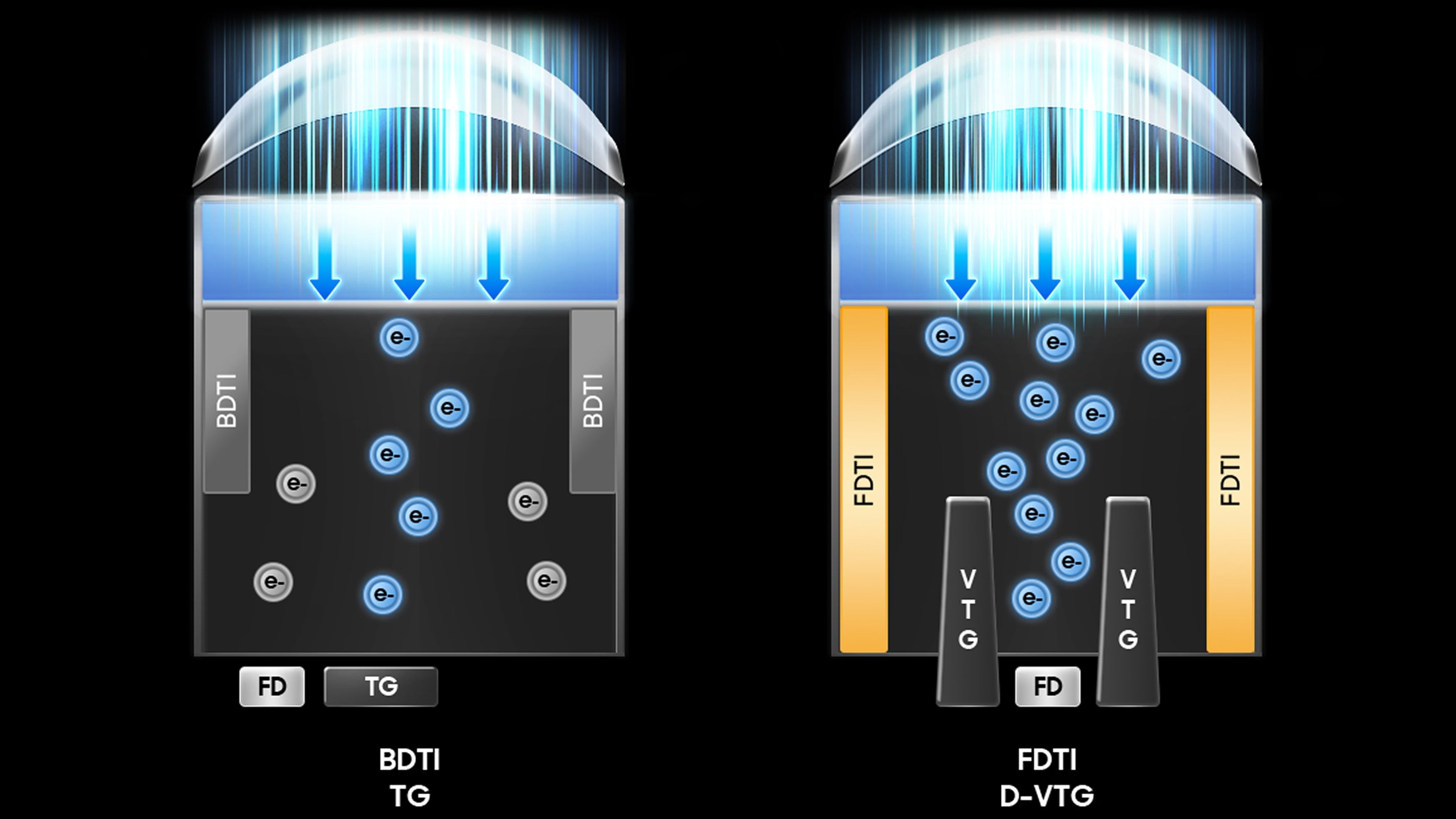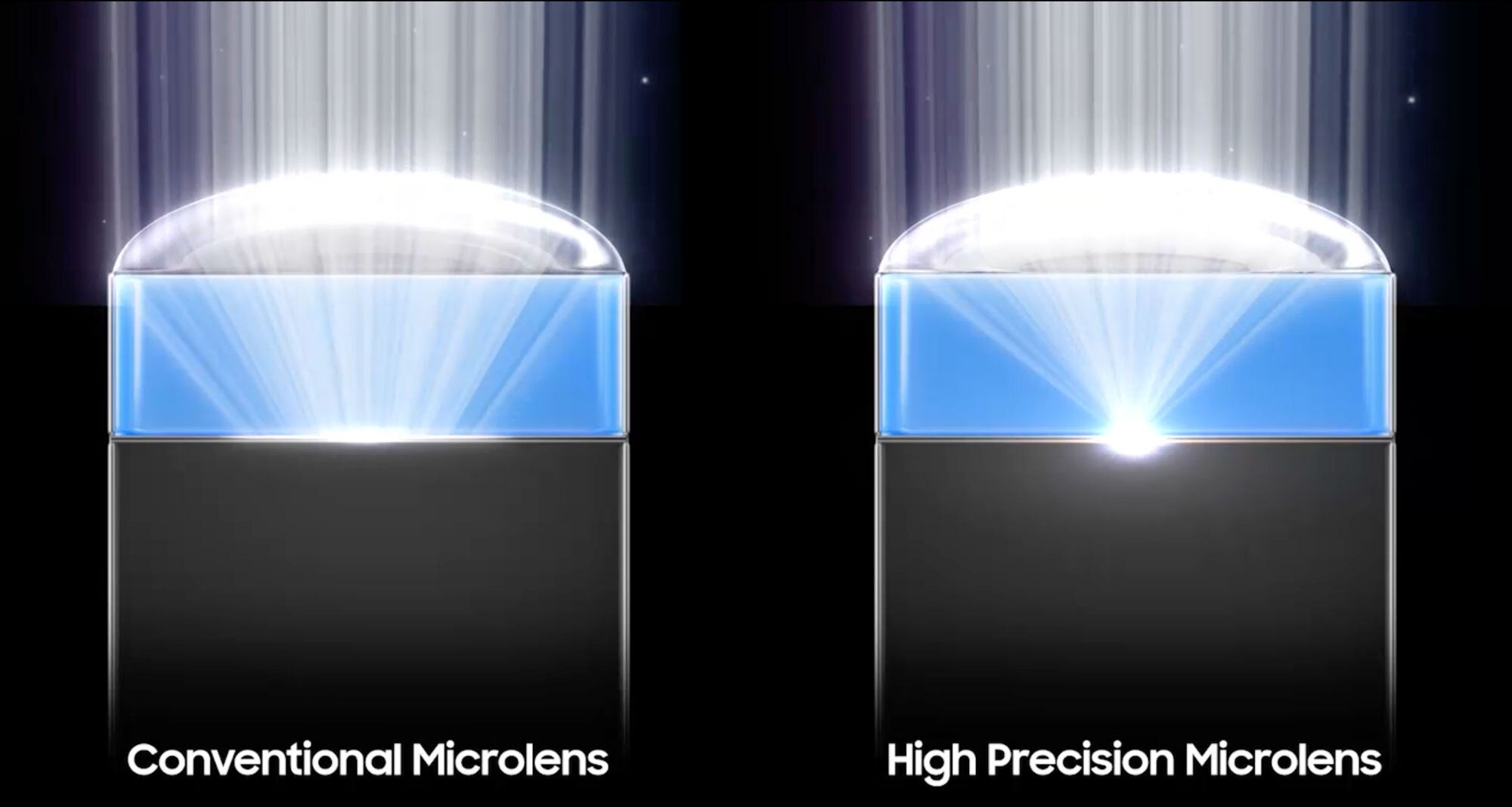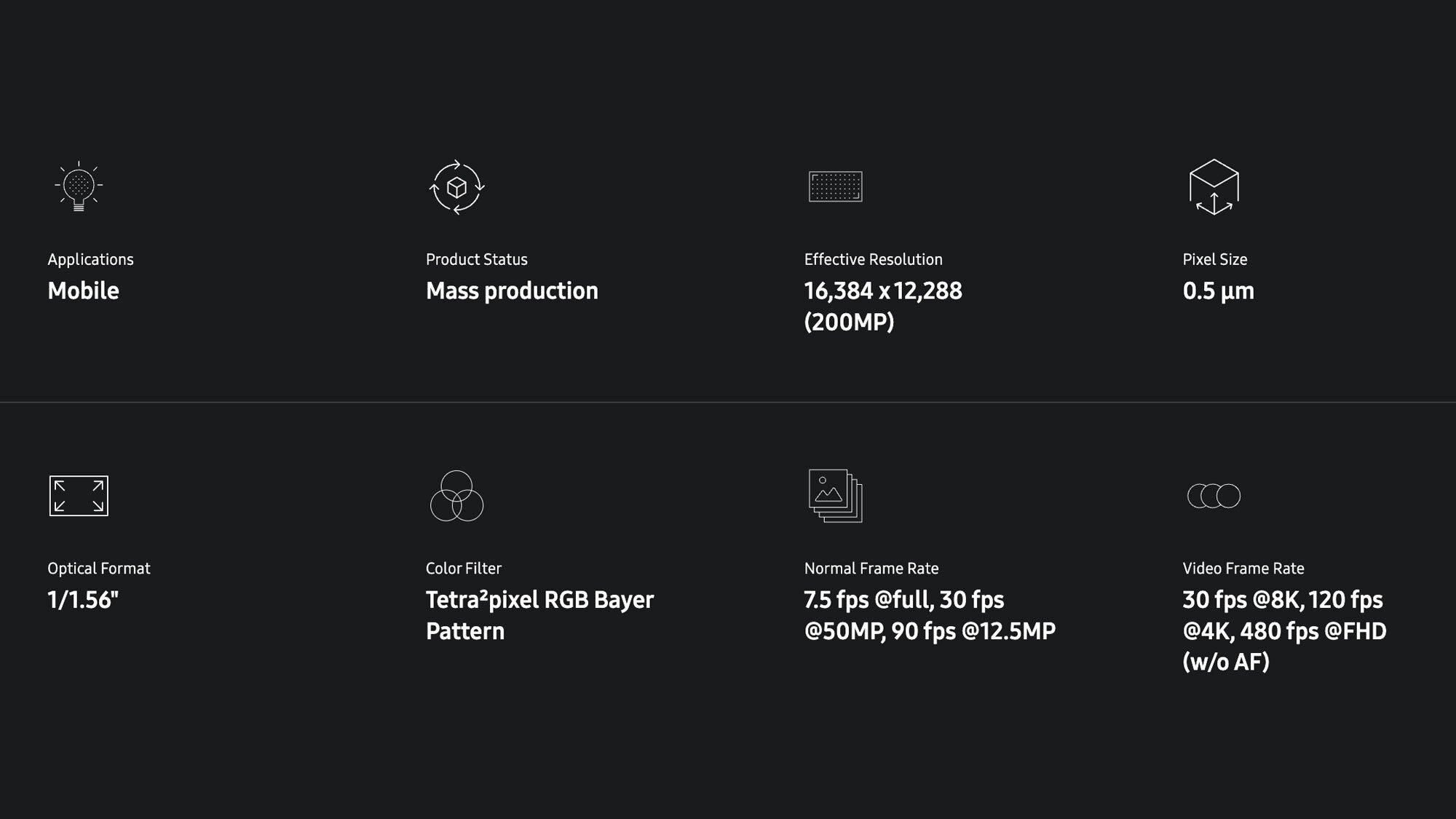ISOCELL HP5 is designed to capture more light despite the small pixels
ISOCELL HP5 is Samsung’s latest 200MP sensor, but unlike the company’s other high-resolution sensors, this one is smaller. Using a 1/1.56-inch optical format, the HP5 features much smaller individual pixels than the usual at this size, and is the world’s first with 0.5µm pixels. Samsung’s idea with that small format is to make the sensor suitable for the telephoto and periscope cameras.Some of you may already question the decision to pack smaller pixels. Thanks to physics, smaller pixels capture less light, leading to higher noise when taking photos, especially in low-light environments. Samsung is aware of the issue and is introducing several innovations to the sensor’s structural design and materials science to mitigate the negative effect of its small size.


One example is the combination of the new Front Deep Trench Isolation (FDTI) and dual Vertical Transfer Gate (D-VTG) technologies. They allow every pixel to store more electrons, leading to improved light sensitivity. Along with that, Samsung utilizes a DTI Center Cut (DCC) structure, which further improves the random noise reduction and autofocus precision.
Improved optics and other technologies for better color performance


Samsung is integrating various technologies into the ISOCELL HP5 to maximize the sensor’s light reception, which should lead to enhanced color expression. The company uses a combination of complicated abbreviations, such as High Precision Microlens, High Transmittance ARL, and High Sensitivity DTI, to describe what made the sensor better at absorbing light with reduced interference. That should lead to clear images even in low light despite what Samsung calls “remarkably small 0.5µm pixels.”Of course, Samsung also utilizes artificial intelligence through what it calls end-to-end (E2E) AI Remosaic processing. That allows the HP5 to capture and process full 200MP images in less than two seconds, which should lead to no visible delay when taking full-res images.
Another highlight is the sensor’s 13-bit color depth, which, according to Samsung, is eight times greater than 12-bit sensors and can express over 550 billion color combinations. The combination of Samsung’s Staggered HDR technology and Smart ISO Pro provides better HDR performance.
Various shooting options


While ISOCELL HP5 sounds more like a zoom camera sensor, it is also likely to end up in the main cameras of some affordable phones, too. Samsung says it allows 2x in-sensor zoom when shooting with a wide-angle camera and up to 6x lossless zoom when used with a 3x telephoto lens. Those numbers feel like they were taken from Apple’s weird math that led to the claim that the single physical camera on the iPhone Air is like having four cameras.
Samsung says the sensor will be capable of shooting photos at 7.5 fps at full resolution, 30 fps at 50MP, and 90 fps at 12.5MP. It also supports 8-bit, 10-bit, 12-bit, and 14-bit RAW formats. As for the video, you should get up to 8K@30fps, 4K@120fps, and FHD@480fps without autofocus. Did I hear anyone saying telephoto slow-motion?
Like other Samsung sensors, HP5 also utilizes the Tetrapixel technology. With it, the sensor intelligently chooses at what resolution to operate, based on the lighting conditions. In low light, it merges the tiny 0.5µm pixels, so it could produce 12.5MP photos at 2.0µm or 50MP images at 1.0µm.
The sensor is now in the mass production stage, and the first phones that use it should be released soon.


“Iconic Phones” is coming this Fall!
Iconic Phones: Revolution at Your Fingertips is the ultimate coffee table book for any phone enthusiast. Featuring the stories of more than 20 beloved devices, it takes you on a nostalgic journey through the mobile revolution that transformed our world. Don’t miss out—sign up today to lock in your early-bird discount!
#Samsungs #200MP #camera #sensor #tiny #pixels #power #telephoto #zoom #camera